
This post will discuss how you can mix your own earth tones. Earth tones are browns and ochres such as raw umber, burnt sienna and yellow ochre. I cover:
- Do You Need to Mix Your Own Earth Tones?
- The Versatility of Earth Tones
- Are Earth Tones “Ugly” Colors?
- Mixing Your Own Earth Tones
- How to Mix Brown (Raw Umber and Burnt Sienna)
- How to Mix Yellow Ochre
- Try It Yourself
- Want to Learn More?
- Thanks for Reading!
The purpose of this post is not to show you how to replace earth tones on your palette. Instead, it is merely to demonstrate that earth tones are not unique colors that you must purchase separately. In fact, you should be able to mix your own earth tones pretty easily using just a limited palette of primary colors.
Do You Need to Mix Your Own Earth Tones?
You do not need to mix your own earth tones, as you have many premixed options available such as raw umber, burnt umber, burnt sienna and yellow ochre. However, it is important that you to understand what earth tones are and how you can mix them for yourself.
Earth tones are what I would consider being convenient colors and I suggest you save a spot for at least one earth tone on your palette. You could mix your own earth tone, but it is usually just easier to use a premixed earth tone.
The Versatility of Earth Tones
Earth tones are extremely versatile colors. In fact, I usually start most of my paintings by staining the canvas with a raw umber or yellow ochre to get rid of the white (white can be difficult to paint on).
You can also use earth tones to:
- Desaturate a color.
- Darken a color.
- Create a natural black by mixing a dark earth tone with ultramarine blue.
- Create a monochrome underpainting.
- Create a brief sketch of your composition.
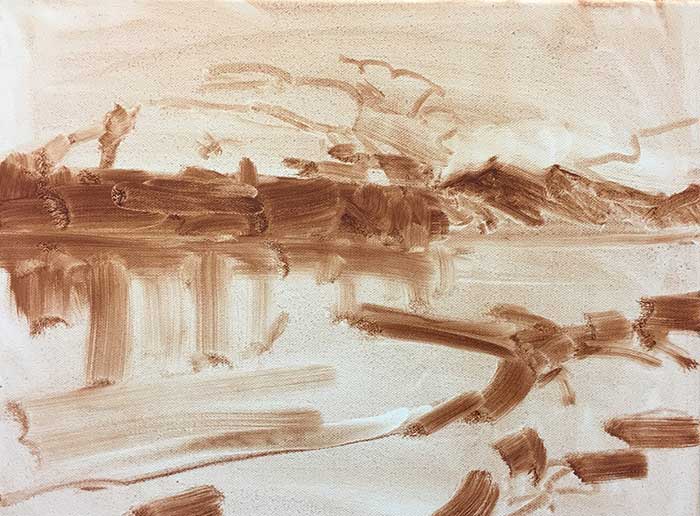
Are Earth Tones “Ugly” Colors?
Don’t fall for the misconception that browns and other earth tones are “ugly” colors. They may not be as brilliant or intense as some colors, but that does not make them any less important.
Remember, try not to think about color in terms of ugly, pretty, beautiful or so on. This is an extremely limited way of thinking about color. Instead, just think about color in terms of hue, value and saturation.
Mixing Your Own Earth Tones
Earth tones are essentially just dulled-down colors. Raw umber is a dull and dark orange. Burnt sienna is a dull orange. Yellow ochre is a dull yellow. These colors are actually pretty easy to mix.
First, you just need to mix a general base color.
Second, you should try to match the value of the color. You can darken with blue or black, or lighten with white or yellow. Remember though, when you darken or lighten a color with anything other than black or white, then the hue will also change.
Finally, you will need to adjust the hue and saturation as necessary. To reduce the saturation, you can mix in black, white or the complement of the color.
How to Mix Brown (Raw Umber and Burnt Sienna)


Raw umber and burnt sienna are essentially just dull oranges. You can mix a dull base color using any of the following methods:
- Mix orange with some blue;
- Mix all three primary colors together, with a dominance towards red and yellow; or
- Mix orange with some black.
From there, you can adjust the hue, value and saturation until you have your own raw umber and burnt sienna.
How to Mix Yellow Ochre

To mix your own yellow ochre you can:
- Start with any base yellow. In the picture above I used cadmium yellow.
- Add a touch of red to darken and warm the yellow.
- Add a touch of blue to darken and desaturate the yellow.
- Make any further adjustments as necessary.
Try It Yourself

A great color mixing exercise is to place your earth tones on a palette and try to mix them yourself using just the primary colors plus white and black.
Want to Learn More?
You might be interested in my Painting Academy course. I’ll walk you through the time-tested fundamentals of painting. It’s perfect for absolute beginner to intermediate painters.
Thanks for Reading!
I appreciate you taking the time to read this post and I hope you found it helpful. Feel free to share it with friends.
Happy painting!
Dan Scott

Draw Paint Academy

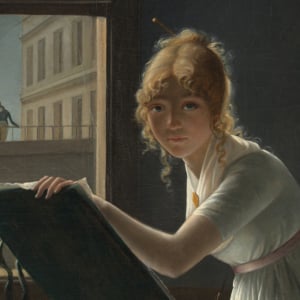
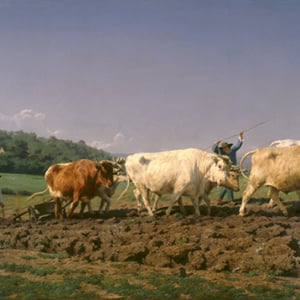
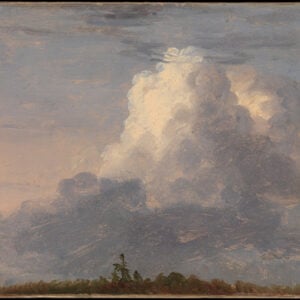
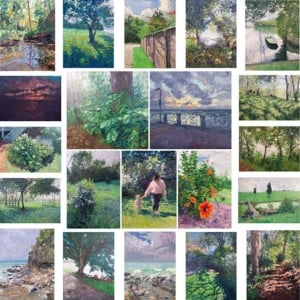
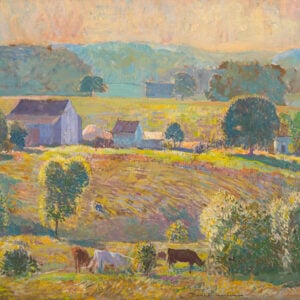
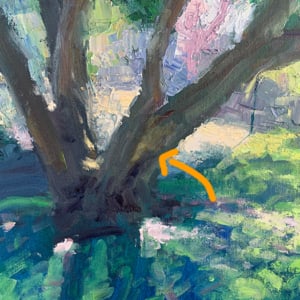
I really enjoy your posts.
I am a beginner-artist. I would like to do Landscape painting which is my first love.
I am very interested to learn the art of colour mixing and in particular, ground colour and
how to mix various greens such as olive.
I like your approach to the subject
Hi Peter, thanks for the comment. Glad you enjoyed the post. Many more to come!
Dan
Really enjoy your posts. Love your art!
Thanks Rose! Really appreciated it.
Regards
Dan
Dan, your posts are so practical and easy to read. I’m a new subscriber and can tell already that I’m going to learn a lot from you. Thank you for being generous with your knowledge and skill.
Hi Gwen
Thanks so much for the kind words! It is my pleasure.
Dan
Hi Dan,
I am an artist who is determined to find my style from years of neglecting my creative side. I am eager to ignite that spark by studying the tips and techniques through subscribing to your Draw/Paint Academy! What a great idea you have!
Lot of theory on the web but your clearity and “how to” of mixing primary colors is easily understood with actual demonstration is much appreciated.
Thanks and keep up the good work.
mixing the colors and reach the exact tone to give life to a draw, is almost like talking and speak the accurate word to express your heart.. YOU REALLY HELPED ME .. thank you very much!
Dan this is very helpful. I find earth tones difficult sometimes. I am always learning from your posts.
Thanks!
I find your posts remarkably insightful and helpful, and your artwork is beautiful! Thank you for everything you share.